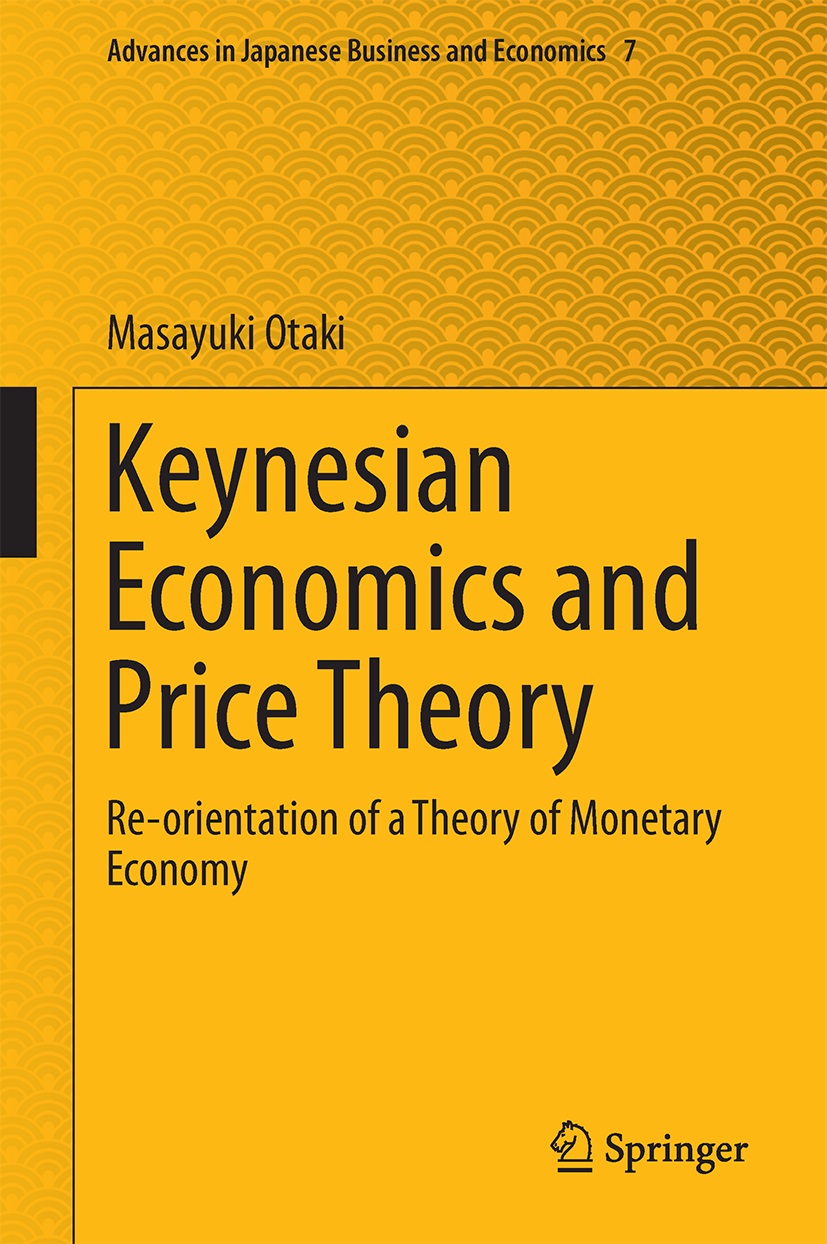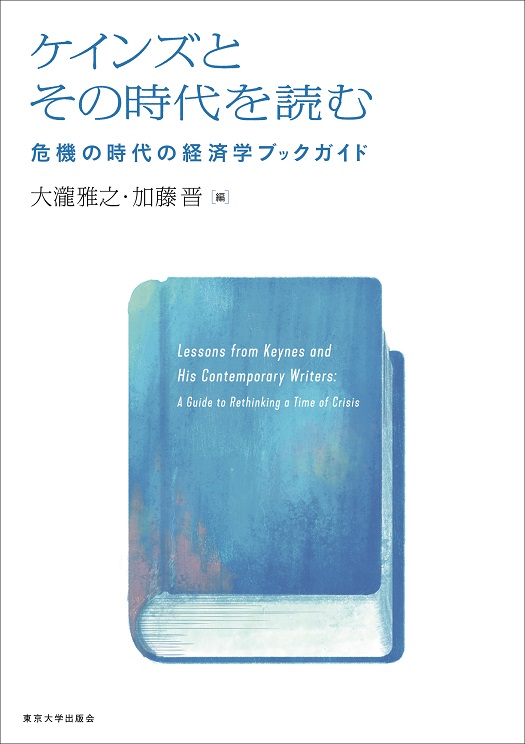
Title
Advances in Japanese Business and Economics Keynesian Economics and Price Theory Re-orientation of a Theory of Monetary Economy
Size
XV + 207 pages, hardcover
Language
English
Released
February 06, 2015
ISBN
978-4-431-55344-1 (hardcover)
Published by
Springer
Book Info
See Book Availability at Library
Japanese Page
This book proves that the quantity theory of money under rational expectations is genetically defied in a two-period overlapping-generations model (OLG) and hence an expansionary fiscal-monetary policy upturns business. This finding implies that a Keynesian proposition, which justifies the necessity of fine-tuning discretional macroeconomic policies, is compatible with a rigorous microeconomic dynamic theory even on excluding ad-hoc assumption concerning price stickiness, such as menu costs and price staggering. This is because monopoly profits increase along with effective demand even though the equilibrium nominal wage stacks at the nominal reservation wage. I also find that the fiscal multiplier that appears in elementary textbooks can be derived from the model of this book when the lifetime utility function of an individual is homothetic.
In theorizing such prominent characteristics peculiar to a monetary economy, it is necessary to understand self-fulfilling expectations concerning the value of money, which is independent of nominal money supply: as long as individuals consider money to possess intrinsic value, money retains such value, and vice versa. In this sense, money is a type of bubbly assets whose value, however, is quite stable unlike that of stocks and immobile assets.
The originality of this book is its success in deriving such a fragile property of money from individuals’ utility maximization and firms’ profit maximization conditions. The following is the gist of the derivation: since individuals assess lifetime utility in making labor-supply decisions, the nominal reservation wageWtR becomes a function not only of the current price level, Pt, but also of the future price level, Pt+1. If the economy has some unemployed individuals, the equilibrium nominal wage is equal to the nominal reservation wage. When each small firm behaves as a monopolistic competitor and the price elasticity of demand is constant, the current price level is set at
Pt=[1+m]・γ-1・WR (Pt,Pt+1),
where γ is labor productivity and m is the monopolistic margin, which is related to the elasticity of demand.
This difference equation describes the law of motion of the price level. Notably, this equation does not include the nominal money supply. Accordingly, we can ascertain that the equilibrium price level sequence is unaffected by a change in nominal money supply. In addition, note that we cannot impose any definite boundary condition on this difference equation because there is an arbitrariness in how confident individuals believe in the intrinsic value of money as discussed above, which results from the prominent property of money as a bubbly asset.
Thus, keeping the current price level intact, a change in nominal money supply increases the real cash balance that is equal to total expenditure of the old generation in the OLG model. This endogenous price stickiness implies that an expansionary fiscal-monetary policy under imperfect employment equilibrium improves the welfare of the economy. Therefore, the quantity theory does not hold for successive generations in a dynamic monetary economy.
In this book, I also show that Lucas’s (1972) assertion that the quantity theoretic equilibrium function uniquely exists in this type of the OLG model is upheld only under very specific money-supply rules and the monetarism-like extraneous belief in the intrinsic value of money.
(Written by Masayuki Otaki, Professor, Institute of Social Science / 2017)
Table of Contents
2. Price Theory in a Monetary Economy
3. The Existence of an Involuntary Employment Equilibrium
4. The Phillips Curve and Inflation Theory Reconsidered
5. A Basic Model of a Flexible Exchange Rate System under Perfect Capital Mobility
6. Function of a Key Currency: International Liquidity Provision and Insurance
7. On the Necessity of Optimum Currency Areas: The Case for Perfect Capital Mobility and Immobile Labor Forces
8. Universal Discipline or Individual Discipline: On the Vulnerability of the Eurozone as a Nonadjustable Local Fixed Exchange Rate Regime
9. Industrial Hollowing under a Flexible Exchange Rate System
10. On the Function of Gold Standard in Idealism and Reality
11. Dexterity as a Source of Economic Growth
12. Monetary Growth Theory under Perfect Competition: Can Monetary Expansion Really Enhance Economic Growth
13. A Keynesian Monetary Growth Model under Monopolistic Competition: Is Economic Growth Sustainable Without Government Help
14. A Critique on Lucas’ Theory
15. Does Search Theory Succeed in Describing a Monetary Economy?



 Find a book
Find a book


 eBook
eBook
